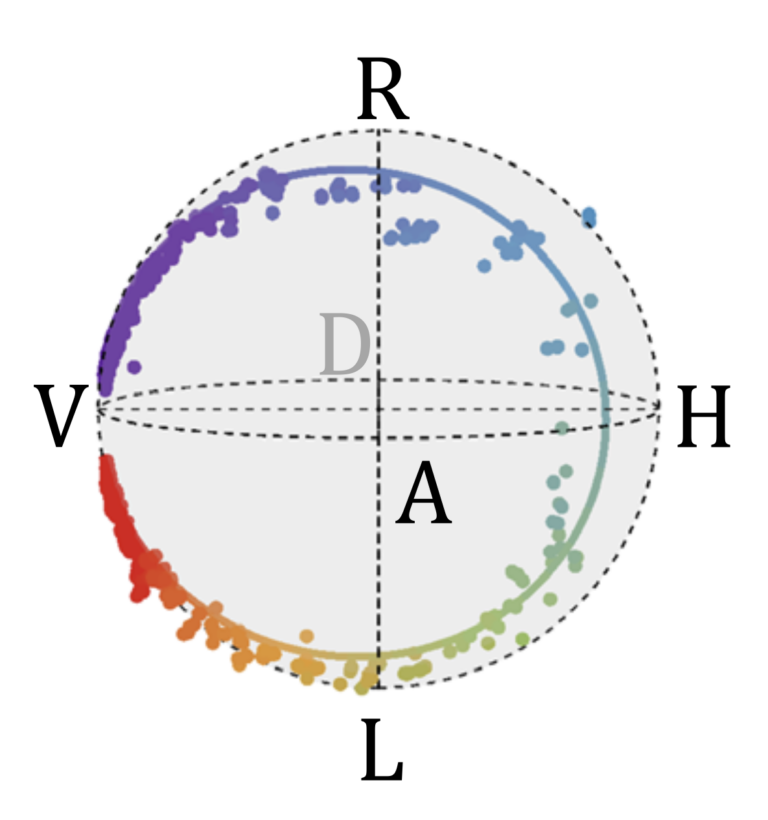The spin of a carrier in a quantum dot is an attractive solid-state quantum bit to store quantum information. The spin coherence time of an electron or a hole can reach values in the 0.1-1 µs range when it takes typically hundred picoseconds to manipulate a spin.
This coherence to manipulation time ratio above one thousand is highly promising for quantum computation.
To benefit from this possibility, our group develops has developed ever more efficient spin-photon interfaces to make sure that every photon sent on the device interacts with a single spin. Initially we demonstrated that a single spin in a micropillar cavity could rotate the polarization of a photon by +-6°, depending on the spin state. Further improvements made it possible to observe giant optical polarisation rotations induced by the quantum dot spin, achieving rotations from -π/2, π and π/2 with extrapolated fidelities around 97%, 84% and 90% respectively.
Such efficient spin-photon interfaces are the backbone for the demonstration of photon deterministic gates, overcoming a strong limitation of today’s optical quantum technologies coming from the probabilistic operations of the gates.
References:
- M. Gundín et al., “Spin Noise Spectroscopy of a Single Spin using Single Detected Photons”, https://arxiv.org/abs/2401.14976
- E. Mehdi et al. “Giant optical polarisation rotations induced by a single quantum dot spin”. Nat Commun 15, 598 (2024).
-
C. Antón et al., “Tomography of the optical polarization rotation induced by a single quantum dot in a cavity,” Optica 4, 1326-1332 (2017)
- C. Arnold et al., “Macroscopic polarization rotation induced by a single spin”, Nature Communications 6, 6236 (2015)
